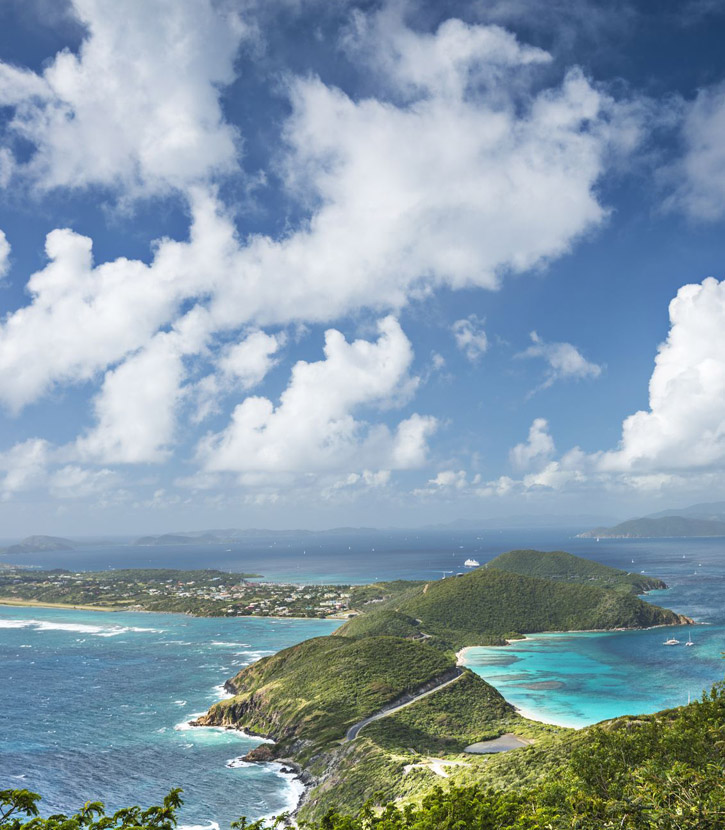When planning a trip to the Virgin Islands, there’s a lot to take into account: your budget, when to go, how you’ll get there, and what necessities to pack. Fortunately–and unlike the question of what to do once you get there, considering all the excellent activities and opportunities to relax–those questions are easily answered with this travel advice.

Virgin Gorda in the British Virgin Islands of the Carribean. Photo © sean pavone/123rf.
Prices, experiences, and weather vary considerably depending on the time of year you visit the U.S. and British Virgin Islands.
The so-called shoulder seasons (April, November) may be the best time of all to visit the islands, especially if you’re on a budget.Winter (December-March) is the high season, when North Americans and Europeans come to escape cold weather back home. This coincides with the dry season in the islands, and the season of the best sailing winds and coolest, most comfortable temperatures. If cost is no object, there is simply no better time to visit than when the weather is clear and sunny, the breezes blow, and there is a whole array of things to do.During the summer (May-October), travelers will find bargains. Most hotels offer discounts of up to 40 percent during summer, and airfare tends to be less, too. It is hotter, and the winds tend to die down for sailing. Some establishments, including dive shops, museums, cultural centers, and stores, cut back their hours.
The so-called shoulder seasons (April, November) may be the best time of all to visit the islands, especially if you’re on a budget. You’ll typically enjoy pleasant weather (not too hot), lower prices (15-30 percent lower than winter rates), and fewer tourists (you’ll have the beaches to yourself).
Also take into account the hurricane season (June-November). While you should not expressly avoid traveling to the Virgin Islands during the hurricane season, buy trip insurance if you do, especially for trips from August to October, the peak of the hurricane season. Flights are usually the first thing to be canceled when a storm approaches.
Citizens of the United States traveling to the U.S. Virgin Islands will not require a passport. Travelers to the British Virgin Islands do, however, need a passport with at least six months validity remaining.
Visitors to the Virgin Islands can fly directly to St. Thomas and St. Croix from several major U.S. cities. You can also fly to San Juan, Puerto Rico, and catch a commuter flight to St. Thomas, St. Croix, Tortola (Beef Island), or Virgin Gorda. Visitors from Europe can also consider routing through Antigua, St. Maarten, or the Dominican Republic.
You should always make hotel (or charter boat) reservations ahead of time, and it’s a good idea to reserve a car in advance, too, especially if you come in the high season. Other arrangements can be made once you get to the islands.
When it comes to packing, light, loose-fitting clothes are best; pack a few long-sleeved shirts and light pants for the evenings, especially in the winter.
Nothing ruins a vacation faster than a ruined camera, so consider bringing a few disposable waterproof or underwater cameras for use near the water.
Be sure to prepare for the sun: Bring sunglasses, a wide-brimmed hat, lip balm with sun protection, and lots of reef-safe sunscreen. The chemical oxybenzone, commonly used in sunscreens, has been proven to negatively affect coral reefs, already under stress from disease, rising sea temperatures, pollution, and careless snorkelers and boaters. When you’re stocking up, carefully check sunscreen labels and look for formulas whose active ingredients are zinc oxide or titanium dioxide instead.
Excerpted from the Sixth Edition of Moon U.S. & British Virgin Islands.